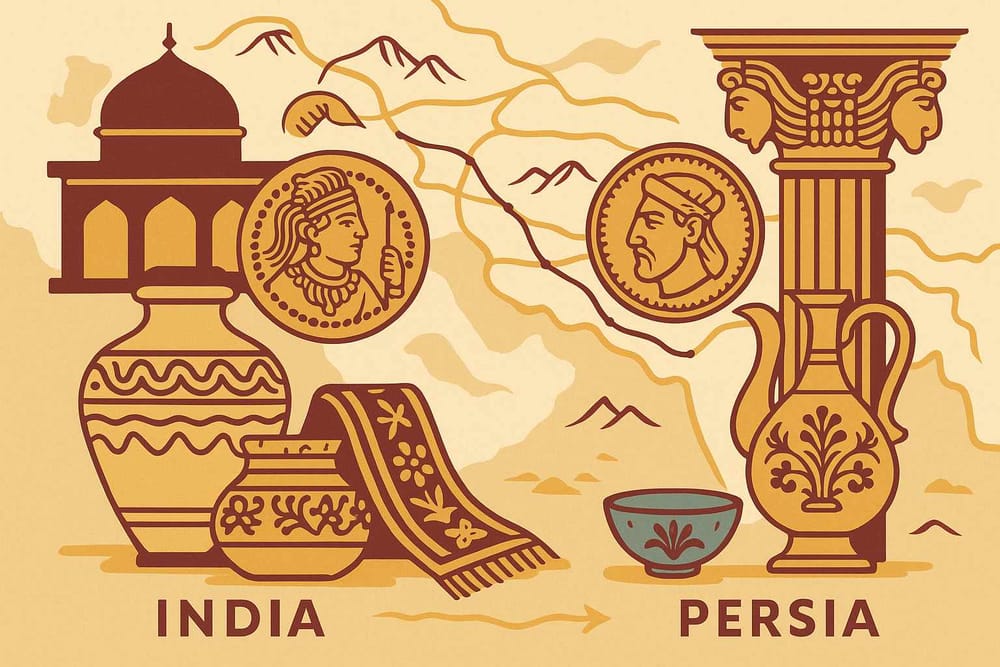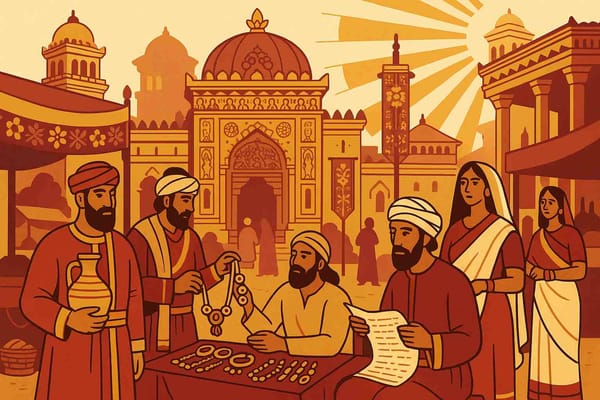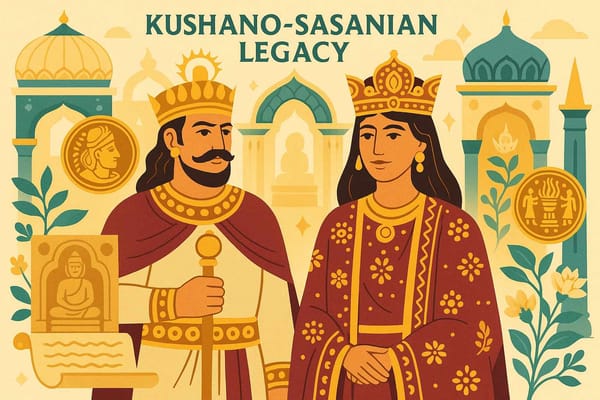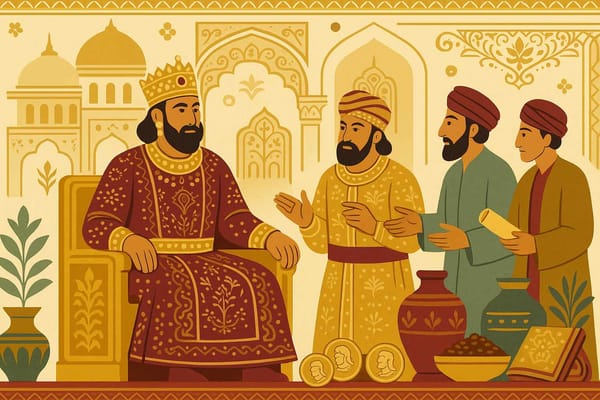
Exploring the Historical Impact of the Kushano-Sasanians-A New Analysis
History isn't always about grand empires that last for millennia. Sometimes, the most fascinating stories are found in the spaces between—in the dynasties that rose from the mingling of two great powers. Imagine finding an ancient coin, not quite Persian, not quite Indian, but a beautiful blend of both. This coin tells a forgotten tale, a story of the Kushano-Sasanians, a remarkable dynasty that flourished in the 3rd and 4th centuries CE, right at the crossroads of ancient civilizations.
They weren't just another ruling family; they were a bridge. A living connection between the Persian Sasanian Empire and the Indian Kushan Empire. Their story is a powerful reminder of how our subcontinent has always been a melting pot of cultures, ideas, and people. Let's take a walk back in time and uncover the legacy of this unique hybrid power.
A New Power Rises: The Birth of the Kushano-Sasanians
To understand the Kushano-Sasanians, we have to look at the two giants of their time. The Kushan Empire, which had ruled over parts of Northern India and Central Asia, was in decline. At the same time, the mighty Sasanian Empire from Persia was expanding eastward, hungry for new territories and control over the lucrative trade routes. When the ambitious Sasanian ruler, Ardashir I, extended his influence into lands once held by the Kushans, something new was born.
Instead of completely erasing the old ways, a new political entity emerged. Sasanian princes, who took the title of Kushanshah ("King of the Kushans"), began to govern these regions. They were a kind of sub-kingdom, acknowledging the authority of the main Sasanian emperor but maintaining a unique identity. They ruled over crucial areas like Bactria (in modern-day Afghanistan), Gandhara, and Sogdiana, becoming the new masters of a land already rich with diverse traditions.
A Melting Pot of Cultures and Beliefs
The true magic of the Kushano-Sasanian period lies in its incredible cultural fusion. It was a time when Persian, Indian, and Central Asian traditions didn't just coexist; they danced together, creating something entirely new. This was a place where Zoroastrian fire altars, a key symbol of the Sasanians, began to appear on coins alongside figures and styles that were distinctly Kushan. Think about that for a moment—it's a beautiful example of harmony and acceptance.
While Zoroastrianism gained prominence, Buddhism, which had flourished under the Kushans, continued to thrive. Monasteries remained active, and the faith continued to spread across Central Asia. This religious tolerance created a vibrant spiritual environment, a hallmark of the diverse lands that make up India's sacred geography. This blending of faiths and cultures was reflected everywhere, from art and architecture to the daily lives of the people.
Guardians of the Silk Road: Trade and Prosperity
The Kushano-Sasanian empire was located in a very strategic position—smack in the middle of the legendary Silk Road. This made them crucial players in the trade that connected the East with the West. They didn't just control the routes; they facilitated the flow of goods, ideas, and technologies between India, China, Persia, and the Roman Empire.
Cities like Begram and Taxila became bustling hubs of international commerce. Imagine the markets of that time, filled with silks from China, spices from India, and Roman glass. This economic activity brought immense prosperity to the region. The Kushano-Sasanians managed this flow of wealth through a fascinating system of currency.
The Unique Story Told by Their Coins
If you want to understand the soul of the Kushano-Sasanian empire, you must look at their coins. They are more than just money; they are historical documents. These coins are unique because they feature a stunning blend of Kushan and Sasanian styles. A ruler might be shown wearing a grand Sasanian-style crown, but the script on the coin could be in Bactrian, Brahmi, or Pahlavi. This blend shows how they projected their dual identity—proud of their Sasanian lineage yet respectful of their Kushan subjects.
The Final Chapter: The Fading of an Empire
Like all great empires, the Kushano-Sasanian rule eventually came to an end. Their decline was not due to one single event but a combination of factors. They faced constant pressure from new, aggressive groups emerging from Central Asia, like the Kidarites and the Hephthalites (also known as the White Huns). These invasions, coupled with possible internal conflicts and shifting trade dynamics, gradually weakened their hold over the region. By the 5th century CE, their unique kingdom had faded into history, leaving behind a legacy that we are still piecing together today.
Why the Kushano-Sasanian Story Still Matters
So, why should we care about a dynasty that disappeared over 1,500 years ago? Because their story is a powerful testament to the interconnectedness of human civilizations. They remind us that our history is not a collection of isolated events but a rich, complex tapestry woven from threads of different cultures, religions, and traditions.
- A Legacy of Cultural Exchange: The Kushano-Sasanians prove that greatness can come from unity in diversity. Their art and culture, a beautiful mix of different influences, enriched the world. This tradition of artistic fusion can be seen throughout Indian history, creating distinct regional styles like the rich heritage of Mewar's arts and crafts.
- Preserving Forgotten Narratives: History is full of such fascinating, lesser-known chapters. It's our duty to uncover and share them, to understand the full depth of our past. By learning about them, we gain a more complete picture of how our world was shaped.
At Bhaktilipi, we believe in the power of these stories. Our mission is to preserve and share the timeless devotional literature and sacred narratives that form the soul of our culture. We see ourselves as custodians of tradition, making sure the wisdom of the past continues to inspire us today. The story of the Kushano-Sasanians is a part of this larger narrative of our shared heritage.
If you feel a connection to these timeless tales and want to explore the spiritual and historical roots of our culture, we invite you to explore the world of Bhaktilipi.in. Join our community on Facebook, Instagram, or YouTube, and let's continue this journey of discovery together, preserving, reimagining, and sharing the essence of bhakti for generations to come.
A passionate group of people dedicated to preserving India's knowledge of Dharma, Karma, and Bhakti for ourselves and the world 🙏.
Comments
Related in

The Kushano-Sasanians- Explore the Empire's Secrets
Sometimes, the most fascinating stories of our motherland are not the ones we learn in school. We talk endlessly about the Mauryas, the Guptas, and the Mughals, but history has countless hidden chapters, tucked away in the sands of time. One such incredible tale is that of the Kushano-Sasanians, an

Exploring the Legacy of the Kushano-Sasanians: History and Impact
History isn't always about grand battles and massive empires that we read in school textbooks. Sometimes, the most beautiful chapters are written in the quiet spaces in between, where cultures meet, shake hands, and create something entirely new. Imagine a time when the powerful Persian Sasanian empire extended

Kushano-Sasanians- A Forgotten Era of History Explained
History, as we often read it, is a grand narrative of mighty empires and legendary conquerors. But sometimes, the most fascinating tales are hidden in the folds, in the chapters that speak not of conquest, but of confluence—a beautiful sangam of cultures. One such forgotten story is that of
